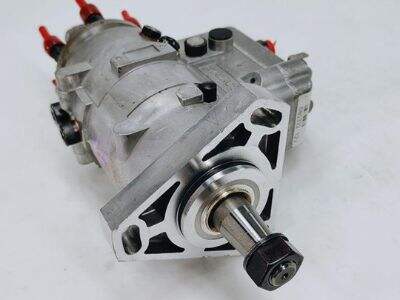Today we are going to explain how the Common Rail Test Benches, like the ones we manufacture in Boten, are used to reproduce real engine circumstances. These cell benches are critical to both the optimization and compliance of engines for safety and the environment. Digging a little deeper on how they work!
AnalogInject module emulates live injection of stimuli for accurate engine performance tests
One of the main advantages of the Common Rail Test Benches is the capability to simulate shots in real time. This means that they have the ability to reproduce when and how much of the fuel is injected into an engine on the fly. In this way, it is possible for the engineers to accurately compare the engine’s performance and, if necessary, to optimize the engine in order to achieve higher efficiency and improved overall function.
Emulation of engine conditions to evaluate fuel system response
Yet another interesting feature of Common Rail Test Benches is the possibility to simulate engine operations. Through simulating the different situations an engine may find, like different speeds or loads, engineers can view how the fuel system will perform and can make any changes needed. An efficiently performing engine that operates well in an array of different circumstances.
Assessment of environmental influences via experimental test bench simulations
As with the passing of diseases, these issues are beginning to receive more attention as the welfare of the environment continues to grow in importance. Engineers use Common Rail Test Benches to emulate a range of operating conditions and to test the environmental impact, such as the amount of emissions produced. That data can then be applied to design engines that are more environmentally friendly and emit fewer pollutants.
**Characterisation of fuel atomisation and ignition at realistic engine conditions.
Engine performance is determined primarily by fuel atomization and burning. Common Rail Test Bench allows engineers to study how the fuel is atomised under actual engine conditions and how it ignites. Study of these processes allows a designer of engine to tune a fuel system so its behavior helps promote complete and efficient combustion of the fuel and, therefore, desirable engine performance.
Modeling of high-stress engine operations to evaluate equipment reliability
Engines are typically subject to severe stress, for example, high loads and temperatures. With a Common Rail test bench such as this, the system is able to simulate such difficult conditions, to investigate the efficiency of pressure supply elements of an engine. Engineers are then able to determine any weak areas, and refine the materials and design to enhance the overall reliability of the engine.
Overall, diesel injection system – such as the ones supplied by Boten – are the ultimate equipment for testing and enhancing the performance of an engine. By replicating true engine conditions, mapping fuel system response, quantifying environmental impact, analyzing fuel atomization and ignition, and simulating severe-duty situations, engineers of all disciplines can verify engines meet the highest requirements for quality, reliability, and performance. These modern test benches hold the future in store in terms of engine technology!
Table of Contents
- AnalogInject module emulates live injection of stimuli for accurate engine performance tests
- Emulation of engine conditions to evaluate fuel system response
- Assessment of environmental influences via experimental test bench simulations
- Modeling of high-stress engine operations to evaluate equipment reliability


